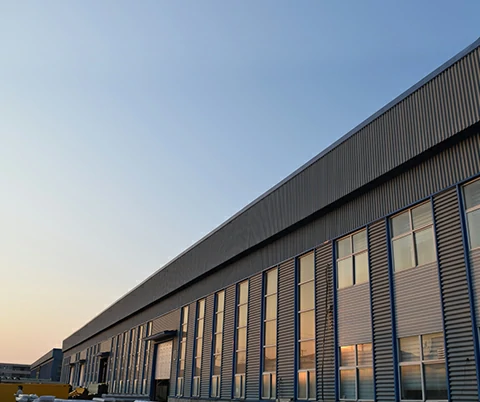loading...
- No. 9, Xingyuan South Street, Dongwaihuan Road, Zaoqiang County, Hengshui, Hebei, China
- admin@zjcomposites.com
- +86 15097380338
- Welcome to visit our website!
Innovative Applications of FRP Grating in Modern Construction and Design
Exploring Grating Made from FRP A Sustainable and Versatile Solution
In recent years, the demand for innovative materials in construction and industrial applications has surged. Among these materials, Fibre Reinforced Polymer (FRP) has emerged as a leading choice for various applications, notably in the form of grating. FRP grating is appreciated for its unique physical and chemical properties, making it a sustainable, durable, and versatile solution for numerous industries.
What is FRP Grating?
FRP grating is a composite material made of a polymer matrix reinforced with fibreglass. This combination provides exceptional strength-to-weight ratios, corrosion resistance, and lightweight characteristics, making it ideal for a wide range of applications. FRP grating is available in various shapes and sizes, typically produced in square, rectangular, or round patterns, to meet specific project requirements.
Advantages of FRP Grating
1. Corrosion Resistance One of the most significant advantages of FRP grating is its excellent resistance to corrosion. Unlike traditional metal grates, FRP grating does not rust or corrode when exposed to harsh chemicals or environments, making it suitable for industries such as pharmaceuticals, chemicals, and wastewater treatment.
2. Lightweight and High Strength FRP grating has a remarkable strength-to-weight ratio. This lightweight characteristic allows for easier installation and transportation, reducing labor costs and enabling the use of lightweight structural framing. Despite being lightweight, it is extremely strong and can support substantial loads.
3. Design Flexibility The versatility of FRP grating extends to its design capabilities. Manufacturers can customize the grating to fit specific sizes, shapes, and color requirements. This flexibility allows for seamless integration into various architectural and industrial designs.
4. Non-Conductive Another significant benefit is that FRP grating is electrically non-conductive, making it an ideal choice for environments where electrical safety is paramount, such as power generation facilities and electrical plants. This feature helps prevent electrical hazards and enhances safety for operators and workers.
grating de frp

5. Low Maintenance FRP grating requires minimal maintenance compared to traditional materials. It is resistant to staining and degradation, eliminating the need for frequent painting or treatment. This aspect can lead to substantial cost savings over the lifespan of the product.
Applications of FRP Grating
Given its numerous advantages, FRP grating is used in a wide range of applications
- Industrial Flooring FRP grating is commonly used in the flooring of industrial plants, including chemical processing environments and manufacturing facilities where safety and durability are essential. - Walkways and Platforms Its slip-resistant surface makes FRP grating an ideal choice for walkways, platforms, and catwalks, providing safety for users in various environments. - Water Treatment Facilities The corrosion-resistant properties of FRP grating make it an excellent solution for water and wastewater treatment facilities where exposure to corrosive substances is a concern. - Marine Applications Due to its resistance to saltwater and marine environments, FRP grating is frequently used in docks, piers, and other coastal infrastructure.
- Transportation FRP grating is also used for pedestrian and vehicular bridges, owing to its lightweight nature and high load-bearing capacity.
Sustainability of FRP Grating
In today’s increasingly eco-conscious world, sustainability is becoming a critical consideration in material choice. FRP grating contributes positively to sustainability efforts due to its long lifespan, low maintenance requirements, and the possibility of using recycled materials in its manufacturing. Additionally, the energy consumption during its production is often lower than that of traditional materials, aligning with global efforts to reduce carbon footprints.
Conclusion
FRP grating presents a modern solution for various industrial and architectural applications. With its lightweight structure, corrosion resistance, and low maintenance needs, it is set to replace traditional materials in many scenarios. As industries continue to seek sustainable and efficient alternatives, the use of FRP grating is likely to expand, paving the way for safer and more durable infrastructures. By choosing FRP, industries not only invest in quality but also contribute to environmental conservation, showcasing a commitment to sustainable practices in today's world.
-
The Rise of FRP Profiles: Strong, Lightweight, and Built to LastNewsJul.14,2025
-
SMC Panel Tanks: A Modern Water Storage Solution for All EnvironmentsNewsJul.14,2025
-
GRP Grating: A Modern Solution for Safe and Durable Access SystemsNewsJul.14,2025
-
Galvanized Steel Water Tanks: Durable, Reliable, and Ready for UseNewsJul.14,2025
-
FRP Mini Mesh Grating: The Safer, Smarter Flooring SolutionNewsJul.14,2025
-
Exploring FRP Vessels: Durable Solutions for Modern Fluid HandlingNewsJul.14,2025
-
GRP Structures: The Future of Lightweight, High-Performance EngineeringNewsJun.20,2025
